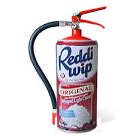Searched and found nothing on TF.
Shopping to replace old extinguishers.
BC vs ABC ratings.
ABC--The "A", as I understand it, helps prevent re-ignition of hot materials.
If I ever need one my first thought is I Want the Fire OUT!!
But if fire is successfully extinguished there will be a clean up and dry chemical leaves various difficult residues.
CO2 is rated B-C
Halon is also B-C but at one site acquires an "A" rating if have larger than 9 lbs.
Dry chemical are less expensive.
Appreciate any discussion as to types people are using--was considering Halon or CO2 in engine room and pilot house where there are a lot of wires, electrical, etc and the less expensive A-B-C Dry chemical in other places
Shopping to replace old extinguishers.
BC vs ABC ratings.
ABC--The "A", as I understand it, helps prevent re-ignition of hot materials.
If I ever need one my first thought is I Want the Fire OUT!!
But if fire is successfully extinguished there will be a clean up and dry chemical leaves various difficult residues.
CO2 is rated B-C
Halon is also B-C but at one site acquires an "A" rating if have larger than 9 lbs.
Dry chemical are less expensive.
Appreciate any discussion as to types people are using--was considering Halon or CO2 in engine room and pilot house where there are a lot of wires, electrical, etc and the less expensive A-B-C Dry chemical in other places

